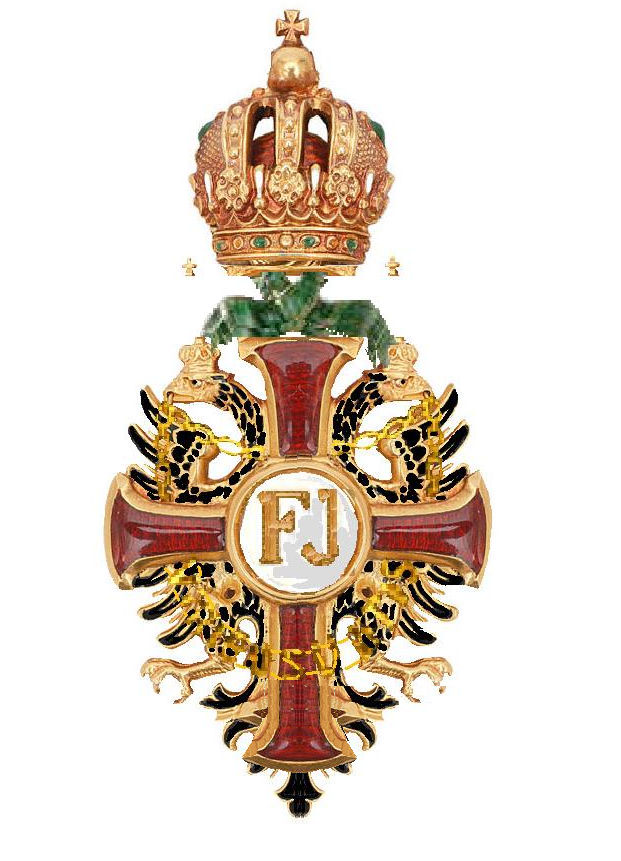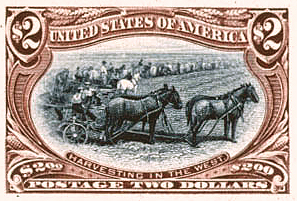|
Emil Gerbeaud
Emil Gerbeaud (french: Émile Gerbeaud, Carouge, Canton of Geneva, Switzerland, 22 February 1854 – Budapest, Hungary, 8 November 1919) was a Swiss-born Hungarian confectioner, chocolate producer, industrialist and entrepreneur. Several famous traditional Hungarian cakes were first introduced by him like the ''macskanyelv'' (), the ''konyakos meggy'' (), the ''csokoládé drazsé'' () and he was the first in Hungary who sold French cakes filled with custard. The ''zserbó'' cake, a well-known product of the Café Gerbeaud is named after him, although it was not available in his lifetime. Life Early life Émile Gerbeaud was born in Carouge, Canton of Geneva, Switzerland on 22 February 1854 into a Roman Catholic merchant, confectioner family. His father, Simon-Jean-François Gerbeaud was a French confectioner and trader. His mother was Jeanne-Marie Gros. During his younger years he was trained in the family business and later worked in several confectioneries in Germany, Englan ... [...More Info...] [...Related Items...] OR: [Wikipedia] [Google] [Baidu] |
Carouge
Carouge () is a municipality in the Canton of Geneva, Switzerland. History Carouge is first mentioned in the Early Middle Ages as ''Quadruvium'' and ''Quatruvio''. In 1248 it was mentioned as ''Carrogium'' while in the 14th Century it was known as ''Quarrouiz'' or ''Quarroggi''. In 1445 it was mentioned as ''Quaroggio''. The current city was built by Victor Amadeus III of Sardinia, King of Sardinia and Duke of Savoy, starting in 1760–70. It obtained the status of city in 1786. Carouge was taken by revolutionary France in 1792, apparently with considerable local support. During the Napoleonic wars, in 1814 Carouge was reincorporated into the Kingdom of Sardinia following a brief occupation by Austria. The Treaty of Turin (1816) transferred Carouge to the Canton of Geneva and it therefore became part of the Swiss Confederation. Geography Carouge has an area, , of . Of this area, or 4.8% is used for agricultural purposes, while or 8.5% is forested. Of the rest of th ... [...More Info...] [...Related Items...] OR: [Wikipedia] [Google] [Baidu] |
Saint-Étienne
Saint-Étienne (; frp, Sant-Etiève; oc, Sant Estève, ) is a city and the prefecture of the Loire department in eastern-central France, in the Massif Central, southwest of Lyon in the Auvergne-Rhône-Alpes region. Saint-Étienne is the thirteenth most populated commune in France and the second most populated commune in Auvergne-Rhône-Alpes. Its metropolis (''métropole''), Saint-Étienne Métropole, is the third most populous regional metropolis after Grenoble-Alpes and Lyon. The commune is also at the heart of a vast metropolitan area with 497,034 inhabitants (2018), the eighteenth largest in France by population, comprising 105 communes. Its inhabitants are known as ''Stéphanois'' (masculine) and ''Stéphanoises'' (feminine). Long known as the French city of the "weapon, cycle and ribbon" and a major coal mining centre, Saint-Étienne is currently engaged in a vast urban renewal program aimed at leading the transition from the industrial city inherited from the 19th ... [...More Info...] [...Related Items...] OR: [Wikipedia] [Google] [Baidu] |
Müller (German Trade Company)
Müller may refer to: * ''Die schöne Müllerin'' (1823) (sometimes referred to as ''Müllerlieder''; ''Müllerin'' is a female miller) is a song cycle with words by Wilhelm Müller and music by Franz Schubert * Doctor Müller, fictional character in ''The Adventures of Tintin'' by Hergé * Geiger–Müller tube, the sensing element of a Geiger counter instrument * GMD Müller, Swiss aerial lift manufacturing company * Müller (company), a German multinational dairy company * Müller (footballer, born 1966), nickname of ''Luís Antônio Corrêa da Costa'', Brazilian footballer * Muller glia, a macroglial cell in the retina * Müller Ltd. & Co. KG, a German pharmacy chain * Müller (lunar crater), impact crater on the lunar surface * Müller (Martian crater), impact crater on the Martian surface * Müller (store), a German retail store chain * Müller (surname), a common German surname * Müller-Thurgau Müller-Thurgau is a white grape variety (sp. ''Vitis vinifera'') which was ... [...More Info...] [...Related Items...] OR: [Wikipedia] [Google] [Baidu] |
Croatia
, image_flag = Flag of Croatia.svg , image_coat = Coat of arms of Croatia.svg , anthem = "Lijepa naša domovino"("Our Beautiful Homeland") , image_map = , map_caption = , capital = Zagreb , coordinates = , largest_city = capital , official_languages = Croatian , languages_type = Writing system , languages = Latin , ethnic_groups = , ethnic_groups_year = 2021 , religion = , religion_year = 2021 , demonym = , government_type = Unitary parliamentary republic , leader_title1 = President , leader_name1 = Zoran Milanović , leader_title2 = Prime Minister , leader_name2 = Andrej Plenković , leader_title3 = Speaker of Parliament , leader_name3 = Gordan Jandroković , legislature = Sabor , sovereignty_type ... [...More Info...] [...Related Items...] OR: [Wikipedia] [Google] [Baidu] |
Rijeka
Rijeka ( , , ; also known as Fiume hu, Fiume, it, Fiume ; local Chakavian: ''Reka''; german: Sankt Veit am Flaum; sl, Reka) is the principal seaport and the third-largest city in Croatia (after Zagreb and Split). It is located in Primorje-Gorski Kotar County on Kvarner Bay, an inlet of the Adriatic Sea and in 2021 had a population of 108,622 inhabitants. Historically, because of its strategic position and its excellent deep-water port, the city was fiercely contested, especially between the Holy Roman Empire, Italy and Croatia, changing rulers and demographics many times over centuries. According to the 2011 census data, the majority of its citizens are Croats, along with small numbers of Serbs, Bosniaks and Italians. Rijeka is the main city and county seat of the Primorje-Gorski Kotar County. The city's economy largely depends on shipbuilding (shipyards "3. Maj" and "Viktor Lenac Shipyard") and maritime transport. Rijeka hosts the Croatian National Theatre Ivan pl. ... [...More Info...] [...Related Items...] OR: [Wikipedia] [Google] [Baidu] |
Fiume
Rijeka ( , , ; also known as Fiume hu, Fiume, it, Fiume ; local Chakavian: ''Reka''; german: Sankt Veit am Flaum; sl, Reka) is the principal seaport and the third-largest city in Croatia (after Zagreb and Split). It is located in Primorje-Gorski Kotar County on Kvarner Bay, an inlet of the Adriatic Sea and in 2021 had a population of 108,622 inhabitants. Historically, because of its strategic position and its excellent deep-water port, the city was fiercely contested, especially between the Holy Roman Empire, Italy and Croatia, changing rulers and demographics many times over centuries. According to the 2011 census data, the majority of its citizens are Croats, along with small numbers of Serbs, Bosniaks and Italians. Rijeka is the main city and county seat of the Primorje-Gorski Kotar County. The city's economy largely depends on shipbuilding (shipyards "3. Maj" and "Viktor Lenac Shipyard") and maritime transport. Rijeka hosts the Croatian National Theatre Ivan pl. ... [...More Info...] [...Related Items...] OR: [Wikipedia] [Google] [Baidu] |
French Honorary Order
French (french: français(e), link=no) may refer to: * Something of, from, or related to France ** French language, which originated in France, and its various dialects and accents ** French people, a nation and ethnic group identified with France ** French cuisine, cooking traditions and practices Fortnite French places Arts and media * The French (band), a British rock band * "French" (episode), a live-action episode of ''The Super Mario Bros. Super Show!'' * ''Française'' (film), 2008 * French Stewart (born 1964), American actor Other uses * French (surname), a surname (including a list of people with the name) * French (tunic), a particular type of military jacket or tunic used in the Russian Empire and Soviet Union * French's, an American brand of mustard condiment * French catheter scale, a unit of measurement of diameter * French Defence, a chess opening * French kiss, a type of kiss involving the tongue See also * France (other) * Franch, a surna ... [...More Info...] [...Related Items...] OR: [Wikipedia] [Google] [Baidu] |
Franz-Joseph Order
The Imperial Austrian Order of Franz Joseph (german: Kaiserlich-Österreichischer Franz-Joseph-Orden) was founded by Emperor Franz Joseph I of Austria on 2 December 1849, on the first anniversary of his accession to the imperial throne. Classes The order was originally awarded in three classes: ''Grand Cross,'' ''Commander's Cross,'' and ''Knight's Cross.'' In 1869, the class of ''Commander with Star'' was added, which ranked immediately below the Grand Cross. The ''Officer's Cross'', which ranked between Commander and Knight, was introduced on 1 February 1901. The order ceased to exist as a governmental award with the dissolution of the Austro-Hungarian Empire in 1918. It was not re-established with the foundation of the Republic of Austria. However, it remains active as a dynastic order of the House of Habsburg. Description Knights wore the decoration suspended from a triangular ribbon on the left breast. Officers wore it on the left breast without a ribbon. Commanders wore ... [...More Info...] [...Related Items...] OR: [Wikipedia] [Google] [Baidu] |
Exposition Universelle (1900)
The Exposition Universelle of 1900, better known in English as the 1900 Paris Exposition, was a world's fair held in Paris, France, from 14 April to 12 November 1900, to celebrate the achievements of the past century and to accelerate development into the next. It was held at the esplanade of Les Invalides, the Champ de Mars, the Trocadéro and at the banks of the Seine between them, with an additional section in the Bois de Vincennes, and it was visited by more than 50 million people. Many international congresses and other events were held within the framework of the Exposition, including the 1900 Summer Olympics. Many technological innovations were displayed at the Fair, including the ''Grande Roue de Paris'' ferris wheel, the '' Rue de l'Avenir'' moving sidewalk, the first ever regular passenger trolleybus line, escalators, diesel engines, electric cars, dry cell batteries, electric fire engines, talking films, the telegraphone (the first magnetic audio recorder), the ... [...More Info...] [...Related Items...] OR: [Wikipedia] [Google] [Baidu] |
Trans-Mississippi Exposition
The Trans-Mississippi and International Exposition was a world's fair held in Omaha, Nebraska from June 1 to November 1 of 1898. Its goal was to showcase the development of the entire West, stretching from the Mississippi River to the Pacific Coast. The Indian Congress was held concurrently. Over 2.6 million people came to Omaha to view the 4,062 exhibits during the five months of the Exposition. President William McKinley and William Jennings Bryan were among the dignitaries who attended at the invitation of Gurdon Wattles, the event's leader. 100,000 people assembled on the plaza to hear them speak. The Expo stretched over a tract in North Omaha and featured a -long lagoon encircled by 21 classical buildings that featured fine and modern products from around the world. One reporter wrote, "Perhaps the candid Nebraskan would tell you in a moment of frank contriteness that the prime object of this exposition was to boom Omaha." Timeline The decision to hold [an] Exposition w ... [...More Info...] [...Related Items...] OR: [Wikipedia] [Google] [Baidu] |
World Fair
A world's fair, also known as a universal exhibition or an expo, is a large international exhibition designed to showcase the achievements of nations. These exhibitions vary in character and are held in different parts of the world at a specific site for a period of time, typically between three and six months. The term "world's fair" is commonly used in the United States, while the French term, ("universal exhibition") is used in most of Europe and Asia; other terms include World Expo or Specialised Expo, with the word expo used for various types of exhibitions since at least 1958. Since the adoption of the 1928 Convention Relating to International Exhibitions, the Paris-based Bureau International des Expositions has served as an international sanctioning body for international exhibitions; four types of international exhibition are organised under its auspices: World Expos, Specialised Expos, Horticultural Expos (regulated by the International Association of Horticultural ... [...More Info...] [...Related Items...] OR: [Wikipedia] [Google] [Baidu] |







